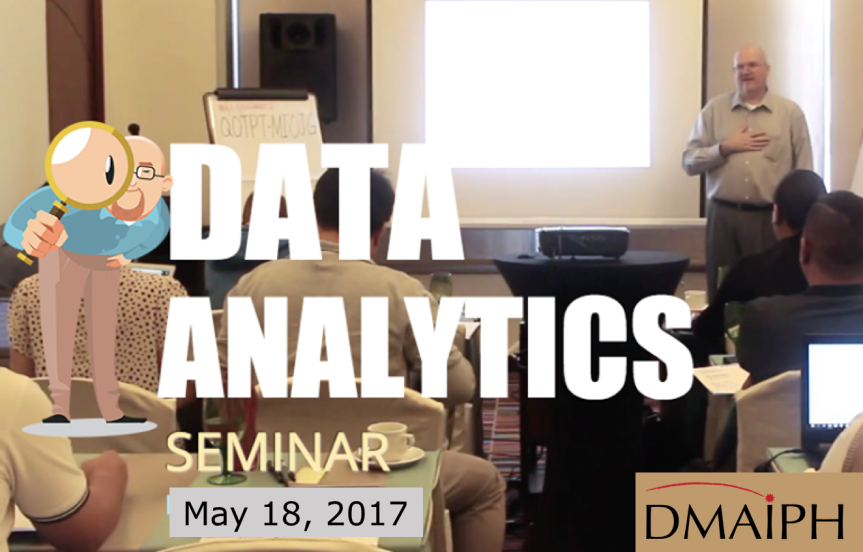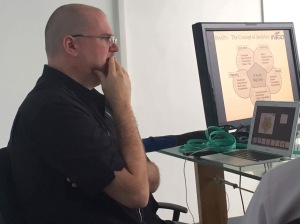My superhero origin story started against the backdrop of the 2008–2009 Financial Crisis. Let me explain a short history here, so stick with me. During the financial crisis, there was a bank that went bankrupt called Wachovia. If you are not aware of Wachovia, they were a bank that started on the East Coast and over time they spread westward, while Wells Fargo started in California and moved eastward. Wells Fargo was one of the few banks that was able to wither the financial crisis pretty solidly and when Wells Fargo acquired Wachovia, it was a pretty big deal for a number of reasons.
We did money transfers aka remittances, where people send money from the US to family and loved ones overseas. It is quite common for people that come to the US to work or to live still have family overseas, that they are responsible for. To support them, they sent money back to help pay for things like their parents’ retirement, or to help their brother or sister set up a business, or they are paying for their nieces and nephews’ education… whatever it may be. This is a big business; in fact, Wells Fargo had a goal of trying to get towards the top of that industry.
Our sights were clearly set on Western Union, being the market leader, and we put a lot of resources into the soon to be converted Wachovia branches in Florida. The goal within the bank, within my team, was to be able to get me number two one the merger was final. We would pass MoneyGram, pass, all the other money transfer operators and put Wells Fargo up there, right behind Western Union.
Now I don’t say that to brag, but around the same time this merger was happening, I realized that I was different. I had a level of skill that set me apart from most of the other analysts working at Wells Fargo during my tenure. This skill, which I had progressively been developing over the year, was my ability to take large, complex data sets from a variety of sources and blend them together to see trends and patterns that most analysts would likely miss.
Like with any superhero origin, when faced with a big challenge, a new power emerges that empowers the hero to save the day. And that’s exactly what happened.
Getting back to Wachovia and Wells Fargo, Wachovia was a diversified financial services company based in Charlotte, North Carolina. Before its acquisition by Wells Fargo and Company in 2008, Wachovia was the fourth-largest bank holding company in the United States, based on total assets. The acquisition of Wachovia by Wells Fargo was completed on December 31, 2008, after a government-forced sale to avoid Wachovia’s failure. The Wachovia brand was absorbed into the Wells Fargo brand in a process that lasted three years. source
This was a pretty big deal, because Wells Fargo up into that point did not have branches in the state of Florida. Wells Fargo had never set up shop in Florida, which is a very diverse state, with a lot of immigrants and first-generation citizens who send money to families abroad.
People who are likely to send money back to their homeland, or to their country their parents came from, and so when they do that that is a great opportunity for Wells Fargo. As the Wachovia branches were rebranded as Wells Fargo, we could use them to send our money transfer service. In fact, we would be the first bank in Florida to be able to send money through a bank which would give the customers have much better benefit than sending through a money transfer service.
Needless to say, everyone was excited. As we finalized marketing plans, I was in a staff meeting and we were talking about what we were going to do when we are able to finally have rebranded stores. We were ready to acquire tens of thousands of new customers and sign them up for the Express Send Service. With this huge opportunity in front of us, the marketing meeting, was about the plans for the launch of the remittance product in Florida.
The marketing team had a whole bunch of events planned, our communications strategy was shared, and we picked a rebranded store in Miami, where we were going to have a ribbon-cutting ceremony. Our plan included inviting local dignitaries the local news, etc; was expected to to make a big splash. We are going to launch in Miami, and on the surface, it made sense because Miami is the biggest city of Florida. The city’s population has incredibly high percentage of immigrants and first-generation Americans, our key target.
However, what I thought in my head, as we are going through all this stuff in the media was that most of the people that have migrated to Florida come from countries that Wells Fargo has not traditionally sent money to. Now, take a step back remember, I said Wells Fargo was a west coast centric bank, most of the money that Wachovia customers send overseas goes to places around the Pacific, China India the Philippines and Mexico.
In addition, we had pretty big markets in Central America like El Salvador, Guatemala. That is where our sweet spot had been for the past several years. Wachovia is East Coast centric; their branches are in parts of country where a lot of people that migrated to the US don’t come from the same markets they do in the West Coast. They come from the Caribbean, they come from South America…. i.e. Colombia, Venezuela, Puerto Rico, Cuba, Dominican Republic, and Haiti. This population of remitters was not one that Wells Fargo had a lot of history sending money to. Here we are excited about sending money overseas, about helping our employee, our customers, be able to send money to their loved ones and yet I’m thinking we have a problem.
Long story short, this is an issue for me because I looked at the data in my head. What I have known previously about the demographics of the area and populations in the state of Florida. Because being a data guy, I know a lot about the graphic data and geographical distribution of our customer base and the digital customers.

So, I raised my hand, I explained to everyone in the meeting, exactly what I just shared with you. The whole thing about, Miami not being the best place to launch in Florida, that its somewhere where we are not going to have a big turnout of new customers. I added that because we are not traditionally sending money to their home countries, this entire plan will fall flat.
I expected that to be enough. The data spoke for itself.
However, everyone was kind of like “well yeah that makes sense Daniel, but you know we’re locked in we’re still going ahead with Miami”.
Basically, I got out voted.
It was time to find a phone booth and put on my cape.

Daniel Meyer heads Sonic Analytics, an analytics firm with offices in Manila, the San Francisco Bay Area and Ocala, FL. With over 20 years in Big Data, Dan is one of the most sought-after public speakers in Asia and offers big data coaching and analytics training seminars on both sides of the Pacific. Dan has also recently joined the Powerteam International family as a small business analytics resource speaker.
Sonic Analytics(www.sonicanalytics.com) brings big data analytics solutions like business intelligence, business dashboards and data storytelling to small and medium sized organizations looking to enhance their data-driven decision-making capabilities. We also advocate the use of analytics for civic responsibility through training, consulting and education.
As citizens of this great democracy, we need to look at the data (analytics), plan a course of action (strategy) and share our data-driven viewpoints (presentation). This approach to a data savvy work force starts in school. So, we started an internship program to empower our youth to use Analytics, plan Strategy and Present their insights… ASP!
When not training current and future analysts, you can find Dan championing the use of analytics to empower data-driven citizenship by volunteering his expertise with schools and non-profits dedicated to evidence-based social progress like Saint Leo University’s Women in STEAM 2020 Conference.
















